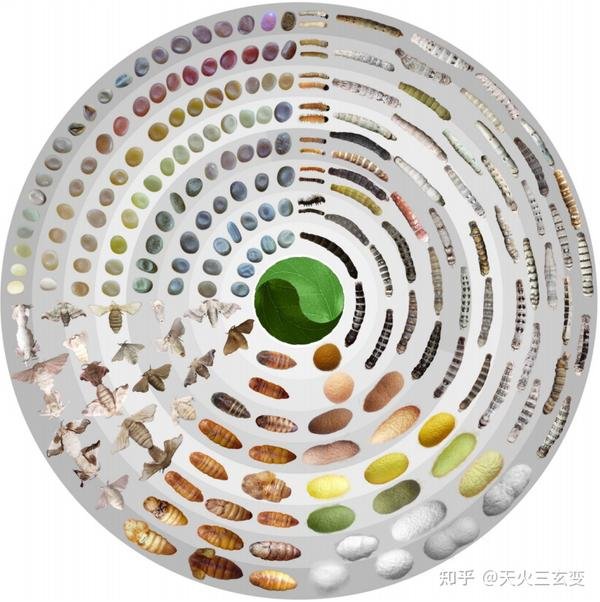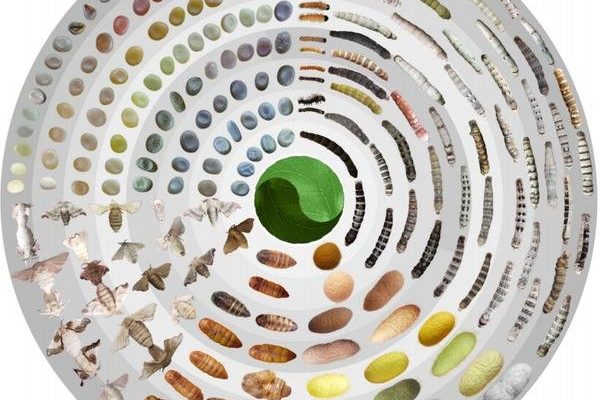
So, what’s the big deal with silkworms? Well, they aren’t just used to produce silk—though that’s pretty cool, too! They serve as ideal models for studying metabolism and growth, thanks to their simple genetic makeup and rapid lifecycle. Think of them as the “lab rats” of the insect world. By understanding how silkworms grow and metabolize, scientists can shed light on broader biological principles that apply to many species, including humans. Let’s dive into this fascinating topic!
Why Silkworms Are Great for Research
Silkworms, or *Bombyx mori*, have been a staple in research for centuries, and it’s easy to see why. First off, they reproduce quickly. In just a matter of weeks, they go from eggs to mature worms, laying the groundwork for generations of study. This rapid lifecycle means researchers can conduct experiments and gather data in a condensed timeframe.
Moreover, they have a well-documented genetic background. Most silkworms are domesticated and have been bred for specific traits, making it easier for scientists to track genetic changes and observe how these affect growth and metabolism. It’s like having a well-organized library where you can easily find the information you need.
Let me explain a bit about their diet, too. Silkworms feed mainly on mulberry leaves, making them herbivorous creatures. This diet is simple, which allows researchers to manipulate their environment and observe the effects on their growth and metabolic processes. For example, if scientists want to study how different nutrients affect growth, they can easily adjust the silkworms’ diet and observe the changes over time.
Metabolic Studies Using Silkworms
Now, let’s talk about metabolism—the way our bodies convert food into energy. By studying silkworms, researchers can get insights into how metabolism works at a fundamental level. Silkworms offer a unique opportunity to understand metabolic pathways, which are like highways for energy and nutrients in the body.
Researchers can analyze how silkworms respond to different diets, environmental conditions, and even medications. For instance, if they want to see how a high-sugar diet impacts growth, they can feed a group of silkworms sugar-rich leaves and monitor changes in their weight and size over time. This data is invaluable, as it can provide clues about metabolic disorders in humans.
Another fascinating aspect is the role of hormones in metabolism. Just like humans, silkworms have hormones that regulate growth and energy use. Studying these hormones can reveal how changes in metabolism occur, which is crucial for understanding obesity, diabetes, and other health issues.
The Growth Process of Silkworms
Silkworm growth can be broken down into distinct stages, making it easy for researchers to study. It starts with the egg stage, where the young larvae are only a few millimeters long. Once they hatch, they enter the larval stage, where they feast on mulberry leaves and grow rapidly.
During this larval phase, they can shed their skin multiple times—up to five times! Each shedding is called a molt, and it’s a crucial part of their development. Think of each molt as a fresh start, like upgrading to a new model. It allows the silkworm to grow larger and prepare for its transformation into a pupa.
Understanding this growth process is significant for researchers. Each molt and growth phase gives insights into the hormonal and metabolic changes happening inside the worm. By studying how silkworms grow at each stage, scientists can connect the dots to growth processes in other animals, including humans.
Genetic Studies with Silkworms
Silkworms have become a platform for genetic research, thanks to their relatively simple genome. This means scientists can easily manipulate their genes for various studies. For example, researchers can knock out specific genes to see what happens to growth and metabolism.
Imagine a research team studying a gene thought to be involved in energy regulation. By creating silkworms without this gene, they can compare their growth rates and metabolic efficiency against normal silkworms. The differences can reveal how crucial that gene is for energy processing and overall growth.
This kind of research extends beyond just silkworms. Findings can have broader applications, potentially leading to advancements in treating metabolic disorders in humans. The knowledge gained from genetic studies in silkworms serves as a stepping stone for more complex research in higher organisms.
Future Directions in Silkworm Research
Looking ahead, the potential for silkworm research seems limitless. With advancements in technology, scientists can explore even more about silkworm metabolism and growth. For instance, techniques like CRISPR gene editing allow for precise alterations in the silkworm’s DNA.
This opens the door to targeted studies that could identify specific genes related to growth rates, metabolic efficiency, and even disease resistance. By understanding these genetic factors, researchers could develop strategies for improving silk production or even using silkworms to produce medicinal compounds.
Moreover, as we face global challenges like food security and climate change, studying silkworms can provide insights into sustainable practices. By understanding how they grow and metabolize in different environments, we can apply these findings to agriculture, ensuring better crop yields and healthier livestock.
In wrapping up, silkworms might seem small and unassuming, but their role in research is anything but minor. They act as crucial models for studying metabolism and growth, offering valuable insights that can benefit science and human health. Their rapid lifecycle, genetic simplicity, and unique dietary needs make them exceptional subjects for research.
As we continue to explore the intricate world of silkworms, we unlock secrets that could lead to breakthroughs in nutrition, genetics, and sustainability. So, the next time you think of silkworms, remember their potential to teach us about life itself. After all, in the tiny bodies of these creatures lie vast mysteries waiting to be discovered.

